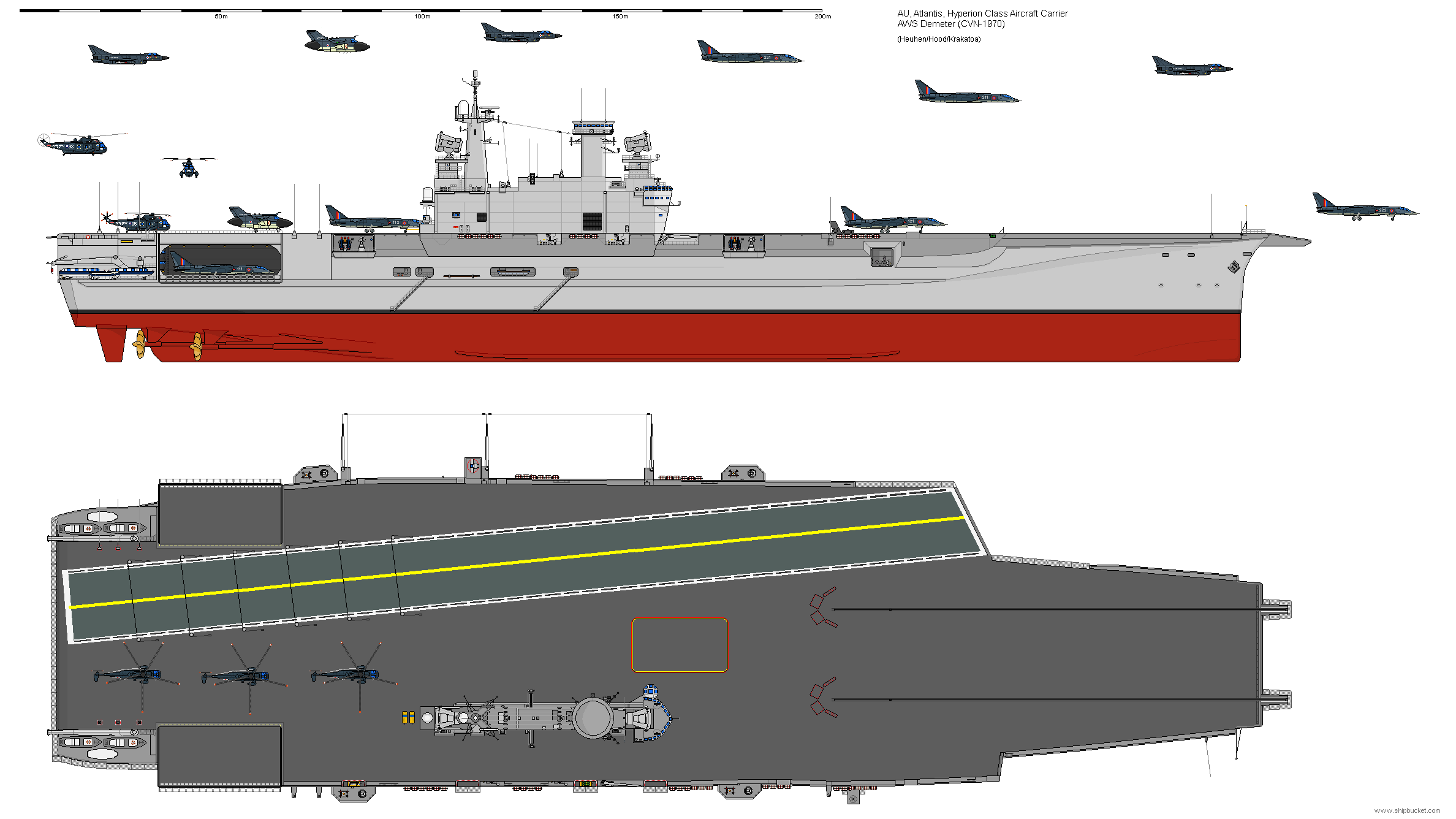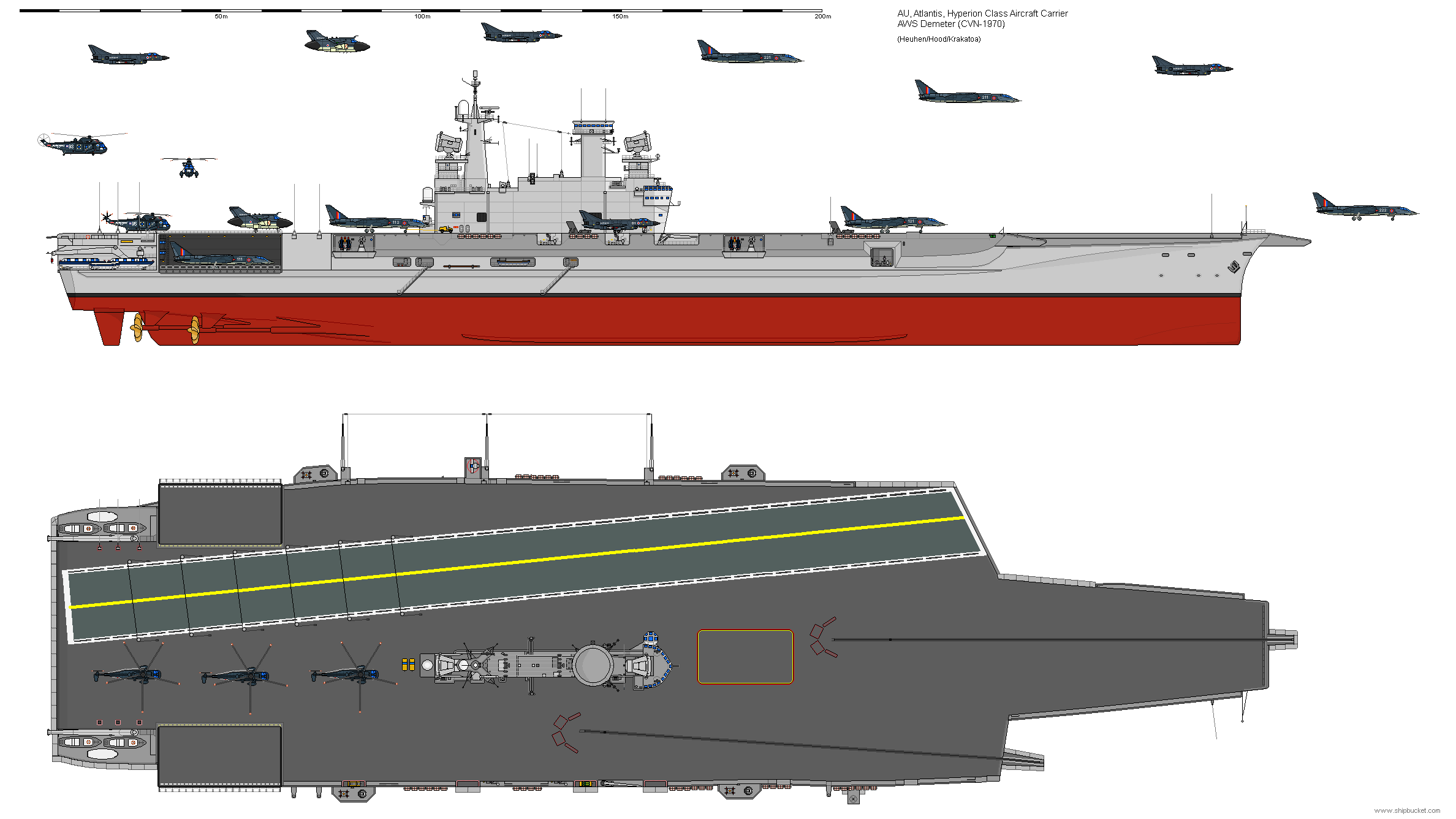The Atlantis Navy invested heavily in the TSR-2 program as it wanted its aircraft carriers to have the best strike aircraft available. The very first thing to notice is that these ships are nuclear powered. Atlantis had been willing to pay the USN to be a part of the Nuclear Navy trials. Atlantis was rich enough to be able to afford nuclear powered vessels, but the cost of these two vessels spent the navies budget for almost five whole years. Only basic maintenance work on existing ships could be carried out till more funds became available for the navy. It was not just the cost of the ships themselves but also the aircraft to serve on them that were expensive. The Atlantean armed forces invested heavily in British designed and built aircraft that were to be used for both the Air Force and Navy. The ships were based on the previous Athena class with slightly enlarged dimensions (mainly wider beam). The ships were built with a radical new layout. With the much faster jets involved, the through/angled deck was kept on the port side while a new 'launch' deck was fitted to the starboard side. The work with the Malta class was carried forward with the bridge structures on these ships. Aerodynamics being applied to the superstructure to ensure the winds did not swirl over the stern of the ships but were directed off to the starboard of the stern to keep them clear of the aircraft landing on. This is where the change to nuclear power was most felt. No exhaust gasses to try and keep clear of the landing path. The only armament carried was the Atlantean long range, supersonic version of SeaCat, named Supercat. Four quad mountings were fitted two on each side.
Laid down in 1965, four years after the completion of the USS Enterprise, Atlanta had paid for the privilege of not only the nuclear engineering project but also the results of the nuclear installation on the Enterprise. This allowed Atlantis to see if they could add any improvements. Both ships were completed in 1970.

The aircraft aboard on commissioning were:
Hawker-Sidley, P.139A Guardian, AEW, Mk.1
Hawker, P.1125 Sea Hurricane, SFAW, Mk.1
BAC, TSR-2 Tempest, SAWS, Mk.2
Westland, Sea King Helicopters.
After much more discussion, I added more freeboard and a full deck below the flight deck that would carry all the ready rooms, offices and some accommodation. This should be the final version.

The following two drawings are the V1 and V2 versions of the drawing above and shows the development of the drawing.

